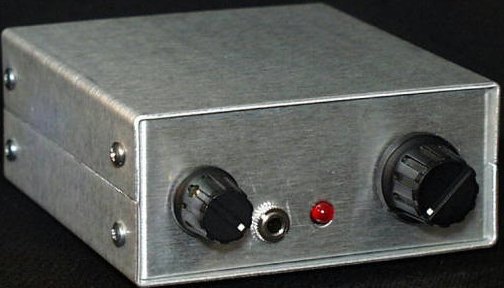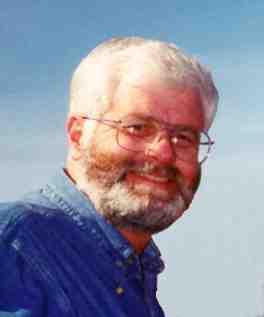Visit the Alaska QRP Club HomePage at: http://home.gci.net/~bhopkins/akqrp
In the last article I covered minimalist style QRP transceivers that cost only $10 to $20. This month I am going to discuss a very educational book recently made available that steps you through building an 80, 40 or 20 meters superheterodyne (superhet) CW transceiver (2 watts). It also covers all the theory within the radio. It is called Elmer 101 and was published in the last issue of QRPp (Norcal QRP Club). Two very small, very good QRP transceivers for under $100 will be described.
Elmer 101 - Learning Theory for Fun
In the early days of winter 1997 - 1998, there were QRP Operators on the QRP-L Mail List that were wanting a fun transceiver project that was more than just plugging in parts on a board. They wanted to learn from the experience and they wanted to help other hams, new and old, to learn the theory behind the QRP transceiver. A general call went out to the list for knowledgeable hams to act as Elmers (Elmers: Hams who help hams or prospective hams with technical or other issues) for the building of a 40 meter QRP CW transceiver.
One of the exciting aspects of the QRP-L Mail List (information near the end of this article) is that a large number of the people that you have seen writing articles (for ham radio magazines) over the years hang out on QRP-L. These technically savvy hams raised their collective hands and volunteered to author course material for the building of a transceiver. The course was dubbed Elmer 101.
The only thing left to do was to decide on which QRP transceiver kit would become the centerpiece of the Elmer 101 course. After much interesting discussion on QRP-L, Dave Benson, NN1G, of Small Wonder Labs, offered to update and improve his already well-known classic SW40 CW QRP transceiver. (The SW40 design was published in the November 1994 issue of QST and serves as a centerpiece in the ARRL's anthology, "QRP Power".)
 The circuit and thus the PCB (printed circuit board) were upgraded and the kit was offered at $50 (Did not include the cabinet and chassis mounted wiring and parts) for the class members. This tiny little 2-watt CW transceiver had already proven to be a real performer and now it was even better. The rig was renamed the SW40+.
The circuit and thus the PCB (printed circuit board) were upgraded and the kit was offered at $50 (Did not include the cabinet and chassis mounted wiring and parts) for the class members. This tiny little 2-watt CW transceiver had already proven to be a real performer and now it was even better. The rig was renamed the SW40+.
Getting Started
Elmer 101 began with a list of prerequisites for each prospective "student" to study as preparation for the actual course. Then, slowly, at a pace geared to allow each student to build and learn, the course unfolded.
I was fortunate to be subscribed to the QRP-L mail list during the development and rollout of the Elmer 101 course. I had been a ham operator for over 32 years, had passed my Amateur Extra Class tests, but in spite of all this opportunity, I still did not understand the inner workings of a modern day CW transceiver. This approach to learning was to be one of the most exciting periods of my ham career.
The prerequisites had me actually reading and studying from the ARRL Amateur Radio Handbook. This material kept me plenty busy as I ordered and waited for delivery of my Small Wonder Labs SW40+ kit. By the time the kit arrived I was ready to begin studying each chapter of the Elmer 101 course. The basic approach was to read the theory, relate it to the schematic and then build and test that section of the transceiver.
The beauty of this course was that if you got stuck or needed help in any way, you could ask the question to the entire QRP-L Mail List group. Always, the answer would be posted in terms designed to help each student grow. (This help is still there today!)
Day-by-day and week-by-week, the theory began to grow in my head. The transceiver grew section by section. The transmitter section was scheduled into the process such that it could be used to test the receiver sections. Gradually, the mystery of a CW transceiver was reduced to such a level that I could enjoy looking at a schematic without getting too frustrated. I had finally learned theory and married it to practice.
Today, the Elmer 101 class is complete. Many SW40+ transceivers have been built and are now operating on the air. This little rig from Small Wonder Labs is available in mono-band form for 80, 40, 30 and 20 meters. While I built mine for the class target band of 40 meters in the Elmer 101 course, I think the 20-meter version would be especially useful for hams in Alaska. This rig costs only $55 postpaid in the US. You can provide all your own chassis parts and chassis or an enclosure kit (shown above with customized labeling) is also available at $35 plus $3 shipping and comes with all harnesses, connectors and controls. As discovered on my business trips to the Lower 48 states, it is a real performer. I have had successful contacts right from my hotel room with a long-wire antenna dropped out of the window.
This rig is a single-board transceiver, 2.8" x 4.0", uses a commercial-quality board, has true VFO coverage of 35-40 kHz and uses a superheterodyne design with crystal filtering.
Elmer 101 Course is Still Available
Because of the huge success of this program, the Northern California QRP Club (NorCal) broke from tradition and devoted an entire QRPp issue to the Elmer 101 QRP transceiver experience. The Fall 1998 issue presented the same material found on the Internet but now it was consolidated into one complete bound volume and it included additional material directly related to the building of the transceiver. After the QRPp issue was released, the demand was still so strong for the Elmer 101 material that NorCal granted rights to Paul Harden, NA5N, to reproduce and sell the materials on an ongoing basis. Paul runs a printing shop and he is providing the Elmer 101 bound course book at or near cost for $12 postpaid in the US.
If you would like to have the fun of building and understanding a QRP transceiver while spending less than $100, here is a wonderful route to travel. The sources are as follows:
Elmer 101 Course Book
Small Wonder Labs
Wilderness Radio SST Series Transceivers
One back-packable CW transceiver that remains popular is the Wilderness Radio SST series of radios. These mono-band kits are available for 40 through 20 meters and are one of the smallest CW transceivers on the market. This tiny rig measures only 1.5" x 3.2" x 3.5" and has a weight light enough to please backpackers. As such, it has become a favorite of campers and hikers all over the world. Its small size coupled with its low current drain make it a perfect rig for the field. 
SST Features:

The price for each complete SST (includes case) is $85. Shipping in the US is $3.25.
Contact:
Next month
Next month I will talk about an amazing new all band QRP transceiver kit that is now available. It is called the Elecraft K2 and has the QRP world all "a-buzz" over its design. It�s specifications and capabilities rival even the top line Ten Tec rigs. There is also an Elmer 200 class currently in progress on QRP-L. Details next month.
QRP-L Mail List
As you find a need for more help in your homebrew endeavors, you should consider subscribing to the ever growing QRP-L mail-list by going to the QRP Internet Club at http://qrp.cc.nd.edu/QRP-L/ . Go to member information and subscribe. As of March 1999 there are over 2,750 QRP enthusiasts subscribed (2985 in July 1999). This mail reflector will open the doors to what ham radio historically was all about: Hams helping hams and everyone having fun.
Additional Information
Some material in this article was taken from and thanks go out to:

AL7FS was originally licensed as WN0LPK in March 1965 (WA0LPK from 1965-1985). Jim is a member of the Anchorage Amateur Radio Club and the South Central Radio Club. For a while he was a Moonbounce (EME) fanatic and earned 2 meter WAS #36. Even then he operated in QRP style, using only about 600 watts output. Jim has participated in HF from 160-10 meters (CW and SSB), packet, satellite, 6 meter, UHF, VHF, ATV, DX, and QRP. QRP has lasted the longest and the strongest - 1970 to 1999.
Permission is granted for reproduction of this article if it is used as written (or changes agreed to by author) and credit is given to the author and to the Anchorage Amatuer Radio Club (AARC) newsletter.
![]()